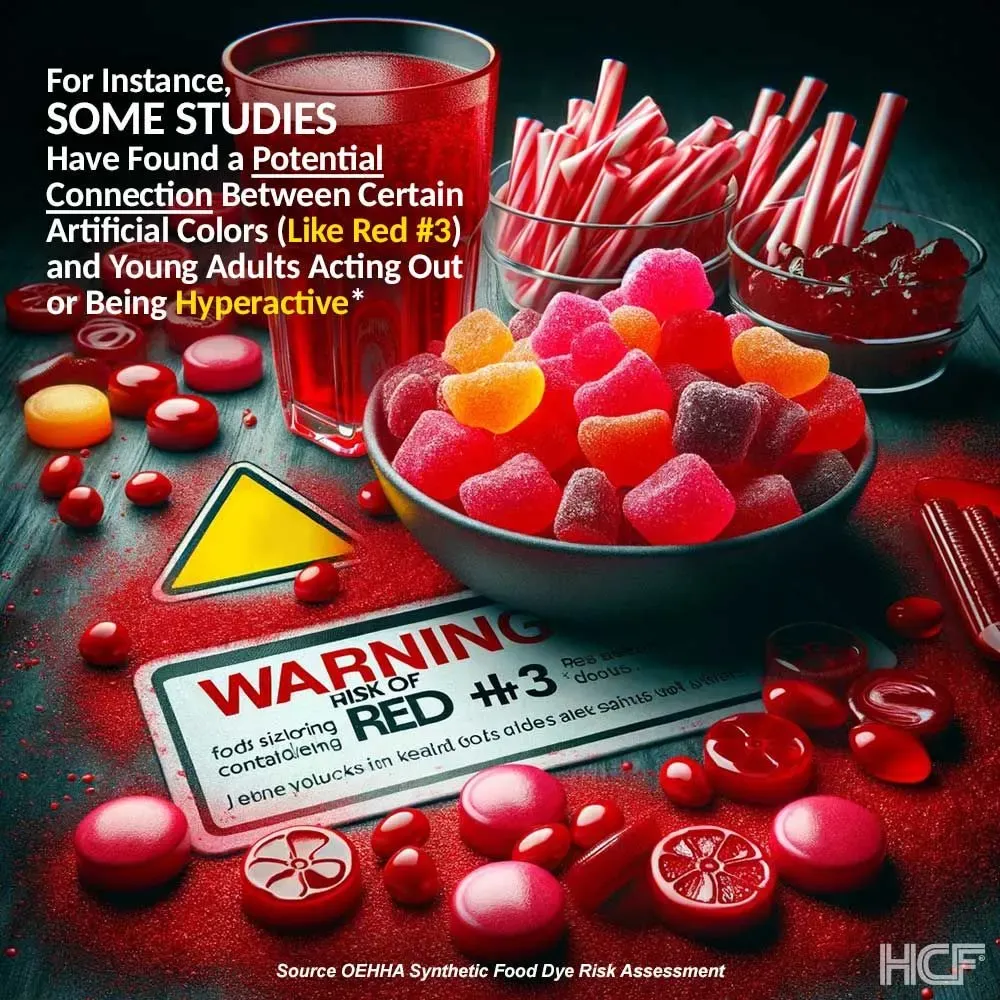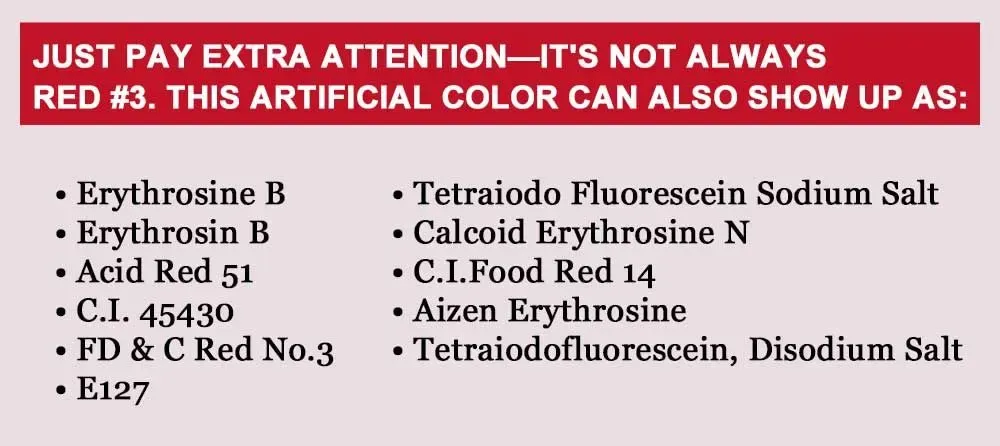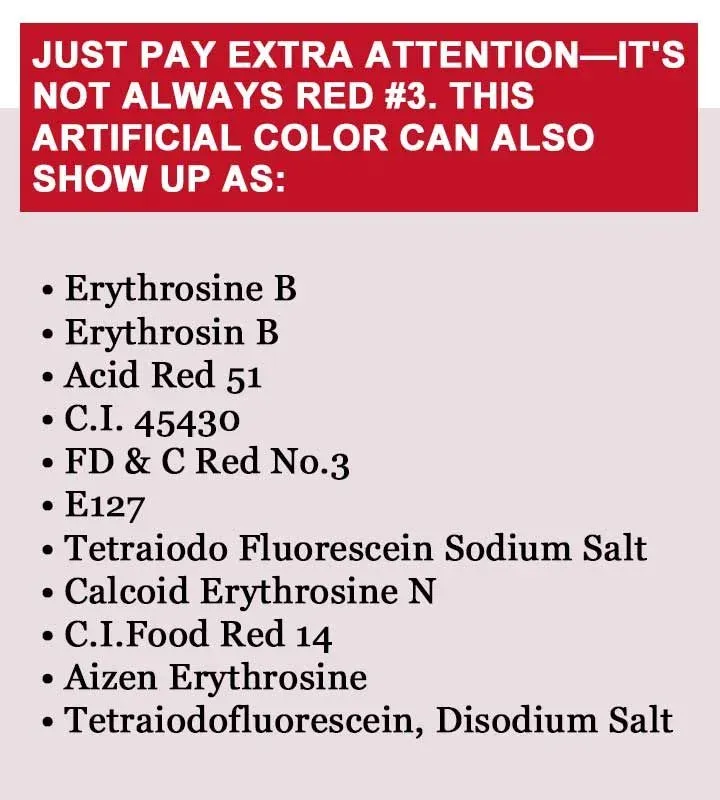
2EXCIPIENTS
Red Flags: Weighing the Risks of Red #3 Coloring (Erythrosine)
2 min read

Essentials
- Despite the FDA's reservations about Red #3 (Erythrosine) in cosmetics, the dye remains approved for food use since 1907 and is still being used in many nootropics today.*
- Although some argue that Red #3 is poorly absorbed and safe for human consumption, contrasting studies suggest a link to hyperactivity and inattentiveness in sensitive young adults.*
Over three decades ago, the Food and Drug Administration (FDA) informed the cosmetics sector that it could no longer use an artificial color called Red #3 (Erythrosine).1 This decision was based on several animal studies showing that high concentrations of this artificial color may be carcinogenic.*
However, the very same artificial color (approved for use in the food industry since 1907), continued to be permitted in the nootropics (and food) industry.*
Fast forward to today, and we can still see Red #3 as the artificial red color of choice in many nootropics.
Recently, the Center for Science in the Public Interest (CSPI)—a well-known food and health advocacy organization—petitioned the FDA to revise its policy on Red #3.2
What is Red #3 and why it may be a reason for concern.
Erythrosine—typically labeled as FD&C Red No. 3 (or simply Red #3)—is a man-made deep cherry-red color derived from petroleum. Why is it so popular in nootropics? Simple. Because it’s relatively inexpensive to produce and it can make capsules (and tablets) look more appealing to consumers.
But what does science say about Red #3? Well, according to research, there may be potential health concerns with this artificial color (To be upfront, most studies used animal models).3 Specifically, prolonged exposure to certain artificial colors in high doses (Red #3, Red #40, Yellow #5, and Yellow #6) led to the development of thyroid challenges in lab rats.*
At the same time, the International Association of Color Manufacturers (IACM) argues that the levels of Red #3 typically consumed by humans are safe since this artificial color is 'poorly absorbed.'*
Fair enough. But here's the catch: There's a lot of contrasting research on this topic.


In a 2021 study, young adults were given foods free of artificial colors for a few weeks and then with Red #3 in varying amounts.4 Now, not every young adult showed behavioral changes. But those who were a bit more sensitive? They became more distracted, restless, and hyper, after being exposed to a small amount of this dye—we're talking 1 mg a day—compared to when they ate foods without artificial colors.*
Interestingly, despite its potential link to inattentiveness and hyperactivity in young adults, Red #3 is still being used in some nootropics... for young adults.*
“Well, how many nootropics (and foods) can actually contain this artificial color? It’s unlikely we are THAT exposed, right?”
You might be surprised. Many still use it. In fact, according to the Environmental Working Group's database,5 over 3,100 food products still contain Red #3.*
And this report doesn’t include the many products claimed to support attention and focus that contain it, too. It’s ironic since many studies suggest a potential link between artificial colors (in general) and Red #3 (in particular) with behavioral challenges in young adults.*
Pay attention when reading labels. Red #3 is not always listed as 'Red #3'.
Here is some good news: the FDA now requires that Red #3 be clearly and visibly listed on nootropic labels. So, if you're shopping for a nootropic, you can always check the list of ‘Inactive’ or ‘Other’ ingredients for any artificial colors (or other unnecessarily additives, fillers, and binders).
Just remember. It’s not always ‘Red #3’.


It’s in your power to be vigilant and make informed choices to potentially avoid the health challenges typically associated with artificial colors.*
Tip: If you love cooking or baking at home, you may also want to try use these red food dye alternatives:
- Beet juice
- Beet powder
- Blueberry juice
- Pomegranate juice
- Beta-carotene
- Cranberries
- Cherries
- Strawberries
- Dried hibiscus flowers
And for those looking for nootropics free of artificial colors and other potentially harmful additives, our HCF® advanced nootropics is formulated with a focus on natural, recognizable, and premium neuro-nutrient forms avoiding unnecessary fillers, binders, and additives.*